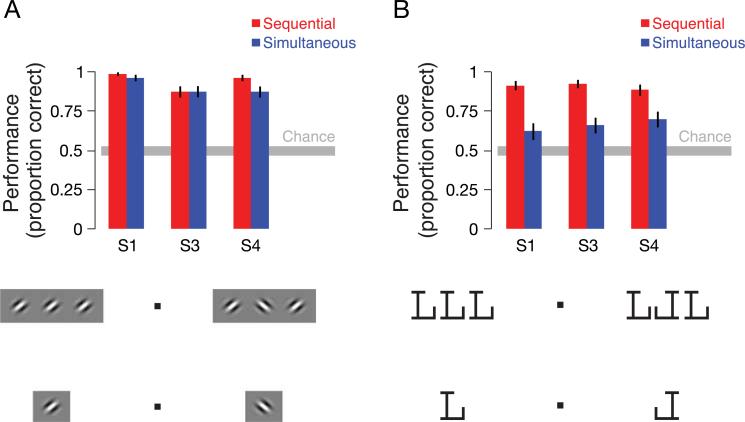Figure 6.
Grating and mirrored letter psychophysics. (A) A target grating was presented between two oriented flanker gratings. The two flankers shared the same orientation. Subjects judged whether the orientation of the target grating orientation was parallel or orthogonal to that of the flankers (chance = 0.5, gray bar). Targets and flankers were presented either simultaneously or sequentially. The demos below the graph show that orientation discrimination is easy whether or not there are flankers. There was no evidence for a difference in orientation discrimination performance for simultaneous and sequential presentations (p = 0.29, paired t-test, n = 3 subjects). Error bars are 68% confidence intervals estimated from the bootstrapped distribution of proportion correct. (B) A target letter was presented between two flanker letters. The two flanker letters shared the same identity. Subjects judged whether the target letter was mirror-reversed or not. The demos below the graph show that this is difficult when there are flankers but easy when the flankers are taken away. Performance was significantly better for sequential than for simultaneous presentation (p = 0.015).

